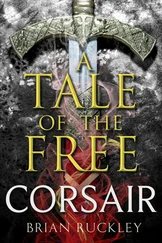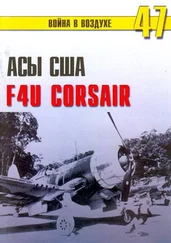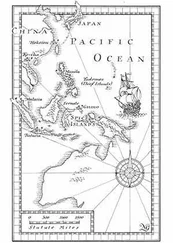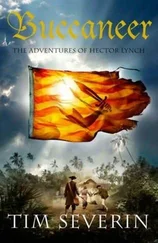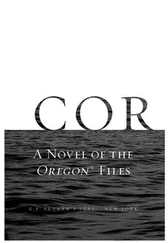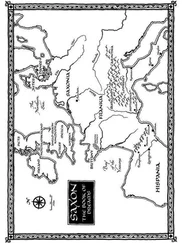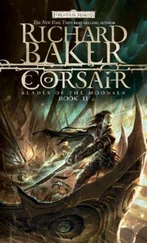A memory stirred in Hector’s mind . . . of a market day back in Ireland when his mother had taken him and his sister into a fortuneteller’s booth. He had been no more than six or seven, but still remembered the shabby brown drape which served as a door. It had been spangled with stars and zodiacal signs.
‘Using this star map and the brass instrument with the discs you showed me, can someone predict the future?’ he asked.
Turgut hesitated before replying. ‘The instrument and the globe, used together, can be used to calculate the position of the stars at the moment of a person’s birth, and from that information it may be possible to foretell an individual’s destiny. But great care is needed. The Prophet, peace be upon him, cautions us, “Behold what is in the heaven and earth! But revelations and warnings avail not folk who will not perceive.” ’
He replaced the globe carefully in the cabinet and, turning back towards Hector, added gravely, ‘It is wiser to use these things for the true path of observance, even as the pilgrims of the haj rely on the stars to direct their paths across the trackless deserts and the seas.’
TEN

‘HE’S A VERY DECENT MAN,’ Hector told Dan when the two friends next met at the bagnio on their Friday rest day. ‘His steward told me that the captain never orders any of his servants to do any job that he would not be prepared to do himself. He said that Turks of the ruling class believe that the only people fit to rule, are those who have themselves served. The captain comes from one of the best families in Constantinople, yet he started off as a lad scrubbing slime off anchor cables as they were winched aboard the galleys. When he grew strong enough, he had to spend six months on the oar bench.’
‘My master is reluctant to sell me to your captain, even if I want to turn Turk,’ said Dan. ‘Since my bastinadoing, I’ve been given only the most unpleasant tasks in the masserie. My master seeks to add to that punishment.’
Hector looked around the bagnio’s grim courtyard and recalled his unpleasant experience with the lecherous kaporal. He had never seen his friend so glum.
‘If only there was some way you too could help out in the library,’ he said, ‘then you too would be transferred to live in the captain’s house.’
‘A library job is not likely when I don’t know how to read or write,’ Dan pointed out. ‘That page he wanted me to examine meant nothing. Just a lot of black lines and some pretty pictures poorly drawn. I could have done better myself.’
Hector looked at his friend questioningly. ‘What do you mean, “done better”?’
‘Those pictures of trees and fish were all very clumsy, and someone had tried to draw a bird you call a parrot. But it was not like any parrot I had ever seen. Wrong shape and the colours were all odd. That’s why I told the captain that I couldn’t recognise anything. Maybe I should have said there was a badly drawn parrot.’
‘You mean you could have produced a better picture of it.’
‘Yes.’
‘Then show me,’ said Hector, suddenly excited. He went to where one of the bagnio letter writers was squatting against the wall, waiting for clients. He paid for a sheet of paper and the loan of pen and ink and thrust them into Dan’s hand. ‘Draw me a parrot,’ he demanded.
Dan looked dubiously at the materials. The pen was cut from a goose quill, and the nib was frayed and blunt. The paper was dirty and slightly crumpled. ‘I wouldn’t be much good with these,’ he said.
‘Why not?’
‘I paint and draw on skin, not paper.’
‘You mean on vellum made from sheepskin, like the monks who taught me in Ireland.’
‘No. I make my pictures on human skin.’
For a moment Hector looked dismayed, thinking that his friend was about to reveal that the Miskito flayed human corpses to obtain their skins. But Dan’s next words reassured him.
‘I paint on living people. It is something that I learned as a youngster. There’s a jungle tribe who live inland from the Miskito coast and go around half naked, with their skins painted with pictures of birds and trees and flowers. When I was a boy the Miskito council sent me to them as some sort of hostage, while one of their youths came to live in my family. Their women folk are the artists. They spend hour after hour painting coloured pictures on the skins of their men. They think it makes the men look handsome and attractive. If the work is cleverly done, the pictures seem to come alive because they move as the muscles ripple. Because I was a stranger from outside the tribe, they indulged me and showed me how to make the paints and brushes.’
‘You had to make your own brushes?’
‘It’s not difficult. You cut a twig from a certain type of bush, chew the end until it is soft, and use that as the brush.’
‘And what about the paints?’
‘We mixed coloured earth or the powder of certain stones gathered in the river beds, and coloured sap from jungle plants. There was scarcely a colour that we couldn’t create. Blues and reds were easy, yellow more difficult. For a special occasion like a feast or a wedding, the women would first paint their men with the pictures. Then they puffed grains of shiny sand over them while the paint was still wet, so that their men folk glittered.’
Hector looked at his friend in astonishment. ‘Show me what you can do. Though we won’t find any coloured earth or jungle plants in the bagnio.’
In response, Dan approached a huckster selling cooked meats from a brazier, and asked him for a small nub of charcoal. Returning to Hector, he took from him the sheet of paper and, laying it flat on the ground, smoothed it out. He made four or five swift strokes with the charcoal, and then held it up for Hector to see.
On the page was the unmistakable image of a seagull, swerving in mid flight.
‘Will that do?’ Dan asked.
Awestruck, Hector took the sheet of paper. ‘Do! Even if I had all the time in the world, and the best materials, I could never have drawn something like that.’
‘I’d prefer to be an artist than a gardener,’ said Dan.
‘Dan, if I can get you a supply of paper, and some pens of the sort we use here, do you think you can teach yourself how to draw and colour with them? You would have to learn how to make the sort of pictures you saw on that map, only better, much better.’
‘Making pictures comes more easily when you do not know how to read or write,’ the Miskito answered confidently.
Every Friday in the month that followed, Hector coached Dan in the art of illustrating maps and charts. He prepared a list of the subjects – mountains, ships, fish, wind roses – and made rough sketches to show Dan how they should look. Once, after much soul-searching, he stole a loose page from a disintegrating collection of charts held in the captain’s library, and brought it to the bagnio to show his friend, replacing the page next day.
Finally, when he was satisfied that Dan had mastered the use of paper and ink, Hector was able to return from the bagnio to the captain’s mansion carrying what he believed would be Dan’s salvation.

WHEN TURGUT entered his library the following morning, Hector was ready with his demonstration. ‘With your permission, effendi,’ he said, ‘I would like to show you a drawing.’
Turgut looked at him enquiringly. ‘A drawing? Something you have found among the logbooks?’
‘No, effendi, it is this,’ and Hector pulled from his sleeve a sheet of paper on which was Dan’s most recent effort with pen and coloured ink. It was a picture of Algiers seen from the sea. All the salient features were there: the harbour mole and the lighthouse, the city walls, the Dey’s castle on the summit and the gardens at either side.
Читать дальше



